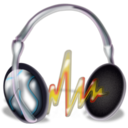
Lines are a versatile element of visual language. They communicate a wide variety of meanings, which are highly dependent on the context in which they appear and the characteristics of the line.
We learn to interpret and comprehend the language of lines through the experience of living in a visually literate culture as well as through education. A few meanings may even be cognitively natural, such as using tally marks for counting. The number of ways that lines communicate is surprising. Here are 21 of them.
 1. Lines isolate and separate
1. Lines isolate and separate
When a line is placed between two elements, it conveys that the elements are separate. For example, columns of newspaper text are often separated by vertical lines to indicate that each column is a separate article. Magazines often use separator lines to isolate advertisements from content. Comics use panel lines to define each frame in a sequence.
 2. Lines convey groupings
2. Lines convey groupings
A partial or complete line drawn around objects implies the objects are part of a similar category or group. This technique is also found in abstract graphics, where a line drawn around objects in a diagram shows the items are related.
 3. Lines represent units of time
3. Lines represent units of time
On the faces of clocks and watches, lines represent units of time. By convention, 12 short lines placed around the circumference represent five minute intervals, though some clocks reduce the number of lines to four at 15 minute intervals. Lines also represent time intervals on timelines.
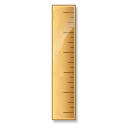 4. Lines represent units of length
4. Lines represent units of length
The connection between time and space carries over to visual language. Lines demarcate units of length as well as time. Even without numbers, a wooden, metal or plastic stick displaying lines at regular intervals conveys the idea of a measuring tool.
 5. Lines communicate brightness
5. Lines communicate brightness
Lines that radiate from an object denote its brightness. This might mean bright like the sun or shiny like a gold coin. Because a light bulb also refers to ‘new idea,’ these lines can also be interpreted as meaning a bright new idea.
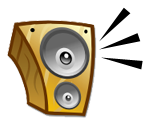 6. Lines convey sound
6. Lines convey sound
Lines surrounding a speaker, earphones or musical instrument communicate that the object is emitting sound. Sound lines come in a variety of styles. They might be drawn as radiating lines or as wedges in cartoon-type illustrations show here. Sound lines are also depicted as the jagged line of a sound wave or as concentric half-circles.
 7. Lines communicate counting
7. Lines communicate counting
From childhood to adulthood, people use tally lines for counting. In the tally system, each line has a one-to-one correspondence with a particular item, such as one line for each point of a score. Using lines for counting is common in many cultures, though the lines might compose different forms.
 8. Lines represent numerical data
8. Lines represent numerical data
Lines represent quantities of data in line, bar and other graphs. In line graphs, the lines depict trends. In bar graphics, individual lines indicate amounts. We also read the peaks and valleys of lines on machine read-outs, like electrocardiograms.
 9. Lines represent machine data
9. Lines represent machine data
The mysterious lines of the bar code tag communicate data that no one but a machine can understand. These lines convey efficiency and automation. We place our faith in their accuracy every time we purchase an item with a bar code.
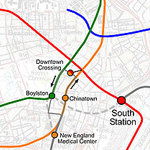 10. Lines represent map information
10. Lines represent map information
Lines communicate many meanings in maps. They designate the roads, streets, train routes and bicycle paths of a region. They undulate through a map to represent rivers and hiking trails. Lines also define the political and geographic boundaries of a map.
 11. Lines communicate connection
11. Lines communicate connection
A line that touches two objects indicates the objects are connected. In diagrams and charts, the boxes or icons are connected by lines to show which ones belong together. In information graphics, a label is often connected by a line to the element it names. Circular lines depict connections on spheres. When circling the earth, the connections are on a global scale.
 12. Lines convey emotion
12. Lines convey emotion
Pardon the smiley face, but even this simplistic and schematized face expresses emotion. The simple curves of the eyebrows and mouth in the appropriate direction, denote anger.
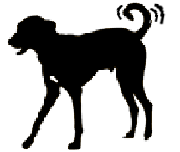 13. Lines communicate motion
13. Lines communicate motion
A few horizontal motion lines placed behind an object imply it is speeding ahead. Short curved lines around a dog’s tail convey it is wagging; the same lines placed around a person in the snow convey shivering. Context is the framework for interpretation.
 14. Lines depict perforation
14. Lines depict perforation
A series of short line segments, in the right context, communicate a perforation for tearing off a form. When shown with a scissors, it designates where to cut. It can also indicate where to fold, as when used in paper crafts, such as Origami.
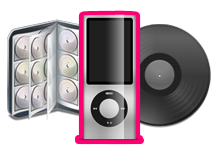 15. Lines signify importance
15. Lines signify importance
A line that is drawn around an object indicates it is important. The intent of the line is to draw the eye to the emphasized object, making it stand out from its surroundings.
 16. Lines communicate transmission
16. Lines communicate transmission
A set of concentric curved lines nearly always connotes transmission of some kind. Lines used in this way have become a ubiquitous symbol for wireless communication.
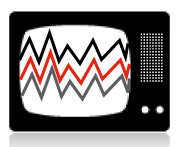 17. Lines represent static
17. Lines represent static
An old-fashioned symbol of static on a television is the jagged line. More interesting than the flat pattern of snow, the jagged line portrays poor reception or a broken TV.
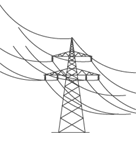 18. Lines depict the physical world
18. Lines depict the physical world
An infinite number of objects can be drawn with straight, curved or zigzag lines. Through their visual characteristics and the forms they create, simple lines can be arranged to suggest objects. The mind fills in the rest.
 19. Lines represent text
19. Lines represent text
Prevalent in clip art and icons, horizontal lines commonly represent text. In applications, icons ranging from the insert bullet button to the vertical line spacing tool use lines to depict text. Groups of horizontal lines have become shorthand for portraying a paragraph in a visual way. This may not be the case for languages with vertically oriented text.
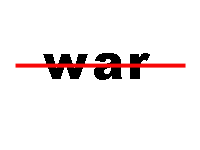 20. Lines represent negation
20. Lines represent negation
A line slicing through an object indicates a negation. When a strikethrough line runs across text, the word is deleted, though still visible. A line slashing through a day on a calendar indicates the day no longer exists. A diagonal slash across a circle negates the object it is referencing. Remember Ghostbusters?
 21. Lines signify links
21. Lines signify links
In the language of the Web, underlining a word or phrase designates it is a hyperlink. By convention, users have learned that a line beneath text means that clicking it will direct them to a related url. Although the underline can be removed through styling, it remains one of the best ways to inform the reader of linking potential.
If you have some additions to this list, please add in the Comments. Thanks!

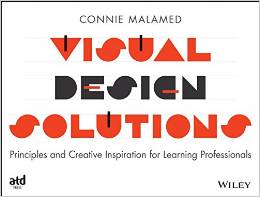
{ 5 trackbacks }
{ 25 comments… read them below or add one }
In the form of a simple arrow, or even without the arrowhead, lines can signify direction.
Thanks for the addition, McCalleygal. I’d like to tackle arrows in another article. Arrows have so many meanings.
I loved this post, really cool 🙂 thanks
isobars ((weather patterns))–so says my friend William P. Thompson.
Ah, isobars. Never heard of them but just found out that they are, “lines drawn on weather maps connecting points of equal pressure.” Cool. Thanks.
Its really nice. Very well described.
lines also represent topography.
they show how steep a hill/valley are.
.mike
ps – nice little read as well – thanks
If you look at things like that, Everything in the world can be represented with line/curves or dots !! Combination of Lines and curves/dots will make alphabets/languages… and so many other things.
On a map – lines signify height – contours
To add to the maps…what about topographic maps? Lines on the map show differences in elevation.
Example:
http://geology.isu.edu/geostac/Field_Exercise/wildfire/images/topomap.jpg
Lots of synchronicity around this topography idea. (3 similar comments around the same time). Thanks everyone.
Very complete and deep article ! I also thing about Morse language, where lines have specific mean
Excellent post, really original and perfectly time. I had a block of space in a new website design that was just crying out for a line to create the separation!! It seems so obvious now. Cheers
Lines are also used often to depict shadowing and depth (think cross-hatching). Great article!
Love this article. Lines also communicate distance, dimension, and perspective!
Lines separate comments from each other too.
Lines signify a long wait.
🙂
Lines convey depth and perspective.
You must read Scott Clouds Understanding Comics.
Good one, Rob! Lol.
AWESOME additions everyone. Your minds work beautifully. And thanks for the rec on McCloud’s book. I keep hearing about it and must get it!
In other words, you can draw everything you want with lines.. i think the article loses it’s strength with every example you add. Cool idea though.
Interesting perspective, Maarten. For me, it shows how lines convey varied meanings that we must learn and decode to understand, which I find fascinating.
Yeah that’s exactly my point. 🙂 Keep it up, interesting stuff.
probably you forgot one, the straight lines on a monitor at hosiptals – It’s to say it’s over … dead!
What a splendid insightful article..it has started to make me get into observing line stuff at design around me !